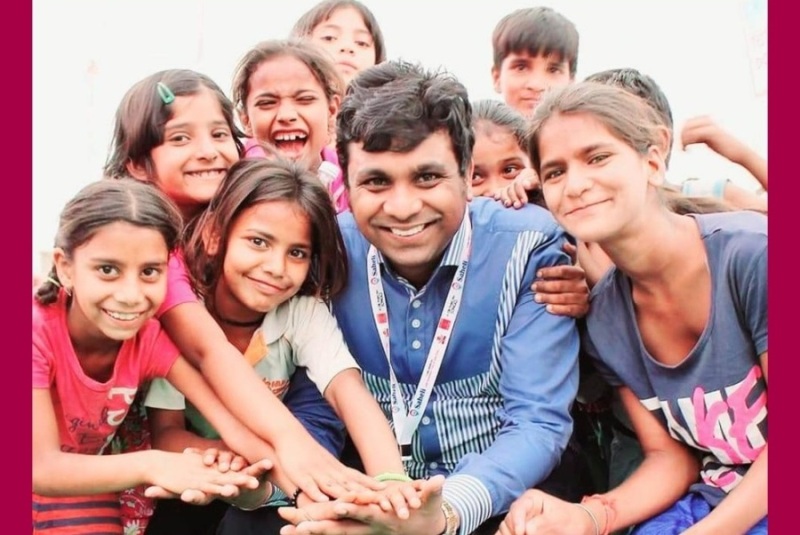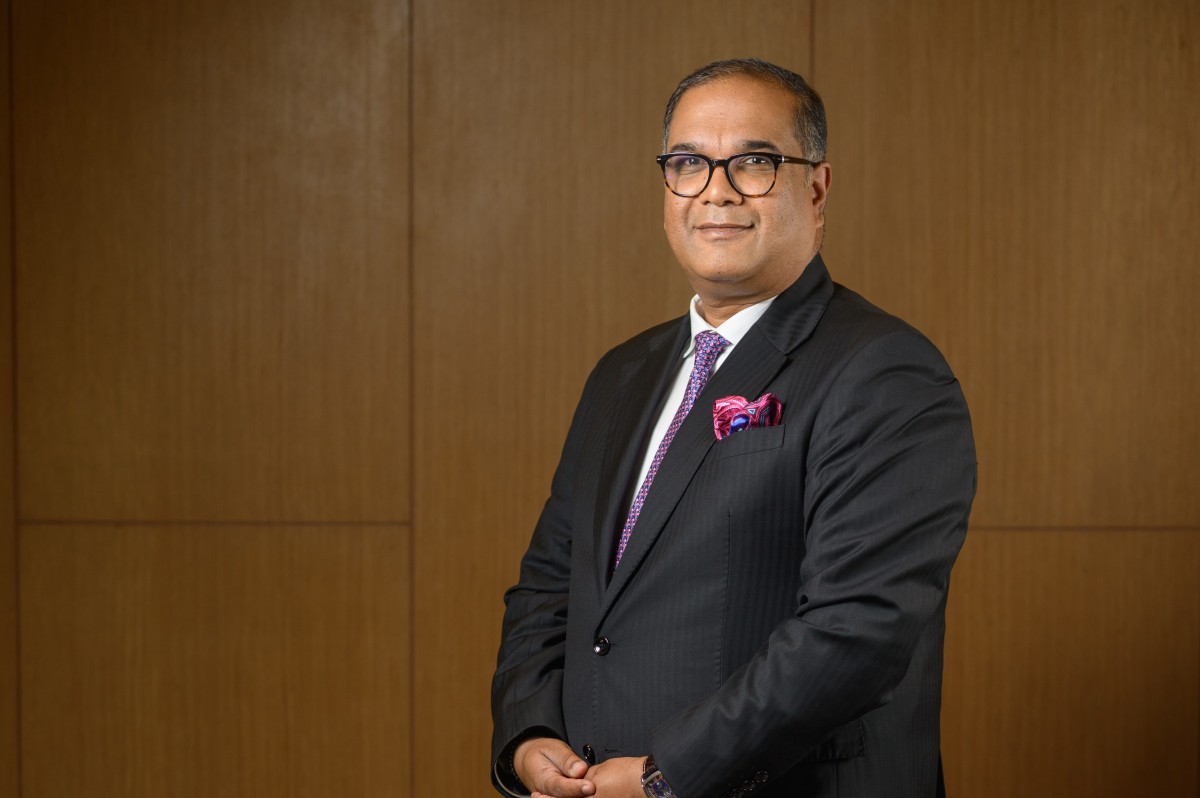Education continues to be the prime focus for development initiatives in India. However, the attention is gradually shifting from issues of enrolments and basic literacy to more qualitative aspects of education, e.g. bridging learning level gaps, innovative teaching, learning and assessment methods, developing next-generation skills, etc.
Technology can- and is- playing a catalytic part in this journey. However, creating the required infrastructure to ensure smooth implementation of technological solutions is easier said than done. In this interview with TheCSRUniverse, Mr. Pankaj Agarwal, CEO, TagHive, talks about their unique offering that overcomes the primary limitation associated with using technology in most schools- it does not require electricity or internet connectivity.
With more than 4000 classrooms added in a short span of time, TagHive aims to cover 100,000 classrooms by 2030- most of them likely to be in rural areas. Read the full interview to know more about how they plan to achieve this goal:
Interview with Mr. Pankaj Agarwal, CEO, TagHive
Q: What is the objective of TagHive? What prompted you to integrate technology into teaching-learning process?
A: Having traversed the path from a small town in Sahibganj, Jharkhand (then Bihar), where I did my formative schooling, to studying at esteemed institutions around the globe for my advanced degrees, I found my true calling in changing the paradigms of education in India. I came back to my village after a decade-long stint at Samsung as the advisor to the CTO, and the reality of the state of public schools in India just dawned on me. I realised I could use my experience of studying in 3 different countries and leveraging my expertise in technology, to create a positive impact in learning processes. This inspired me to create a solution that would be able to make any school “smart” without the dependencies of infrastructure and the internet in the classrooms. That solution is Class Saathi.
Q: In the last couple of years, many classroom applications have been introduced for urban private schools. How do you position Class Saathi vis-à-vis other applications in the urban market?
A: Class Saathi is the world's first Bluetooth-based clicker solution designed specifically for all K-12 schools. With its “Data First” approach, it ensures greater accountability at all levels, providing student engagement and performance-tracking information that is vital to enhance learning. As a combination of clickers for each student, a software application for students, teachers, parents, and a dashboard for school administrators, Class Saathi makes formative assessment easy and fast. It is available on smartphones, tablets, PCs, and interactive panels. The app currently has over 30,000 questions on Maths, Science, Social Studies and English for students of Class 6 to Class 10 and is based on the CBSE curriculum. More grades are being added. Over 8 million questions have been solved on Class Saathi as of February 2023.
Q: Do teachers of rural schools require any training to use your solutions? How do you provide that?
A. Being a simple Bluetooth-based device, Class Saathi is easy to use and teachers do not require much training as the clicker and the software are self-explanatory. However, initially, we do teach them how to use the application and all they need to do is just have a smartphone and our Class Saathi kit and they can get started.
Q: Many students from underprivileged sections are first-generation learners. Self-regulated learning is a necessity for such students. Are there any specific features in your offerings that help address this issue?
A. We are actively collaborating with India Inc. to bring tech driven education to the underprivileged, as part of the corporate CSR initiatives. Some of these include the UP project for 200+ classrooms sponsored by Ford Foundation, 3 schools in conflict/remote zones in Northeast India with Sunbird Trust and the CSR arms of multiple companies. TagHive currently has 23 registered patents and trademarks and 11 others are pending, most of which are in the ed-tech and AI ambit. The company aims to continue to build technologies that make learning and assessment more efficient with a core focus on the K-12 segment and is confident that its offerings will create a pull factor in the Indian market.
Q: How is the assessment regarding the change in student performance done after introducing your app/clicker in a school?
A: Post-COVID, we recognize that there is an urgent need to close the learning gaps through a tech-driven solution that facilitates continuous assessments, consistent performance tracking and data analysis and insights. And that is where Class Saathi's clicker-based assessment solution has started to make an impact.
It helps connect individual student clickers to the teacher’s smartphone. Once a child enters the answer, it is recorded on the app and can be easily traced back by the teacher. Over a period of time, through the data collected, teachers and parents can assess the student’s progress and his or her strengths and weaknesses, thereby pointing out areas of development for prompt remediation. With Class Saathi’s unique ‘Data First’ approach, TagHive aims to enable, engage and empower all stakeholders in the K-12 education ecosystem to be able to truly understand the learning outcomes of all students by enabling greater accountability at all levels, providing student engagement and performance tracking to enhance learning.
Not only is this solution affordable and accessible even in remote areas with scarce internet penetration, but it is also agile to accommodate the varied needs of both English and regional language assessments. In the coming years, we aim to become a technology enabler of choice for students, teachers and educational institutes seeking to enhance their assessments and performance monitoring capacities.
Q: How many schools do you plan to reach in the medium term (3-5 years)? What percentage of this estimate is likely to be in rural schools?
A. We have already covered over 4000 classrooms in such a short period. We plan to cover over 20,000 classrooms by 2025 and over 100,000 classrooms by 2030. We expect a majority of them to be rural schools. While the National Education Policy (NEP) and its supporting initiatives like NDEAR and DIKSHA are working towards building customised tech infrastructure for wider access to ed-tech across the nation, it is also important for ed-tech start-ups and companies to align their solutions to meet the diverse and specific needs of students across the country.
Q: Can we expect more social impact partnerships along the lines of the Arvind Foundation and Ford Foundation in FY23-24?
A: Of ‘course! We believe that we can be a great choice for the CSR teams of corporates because we not only make the schools better with Class Saathi but also the monitoring becomes seamless. Once a classroom is powered with Class Saathi, the CSR teams can look at the dashboard to see the usage of the solution and the improvements of students over time. We are talking to some reputed firms and have started the empanelment process already with one of the top 10 global companies.
Q: Please share your views on the challenges/bottlenecks that exist at a school, community or policy level when it comes to the implementation of technology solutions for rural/underprivileged students.
A: There are three major challenges. First, since a large number of school-going students have lost crucial learning time due to the pandemic, the gaps have become wider. Second, although there is immense potential, there is also a huge magnitude of work that remains to be done in order to address daunting problems which are made severe due to the complexities on the ground. Third, it is extremely difficult to have a solution that can truly cater to all, considering the wildly varying contexts and demographics around the country. What works in Varanasi will not work in Imphal. We believe that education is meant to be the great equalizer for all, so we must build solutions that are truly inclusive.














.jpg)




